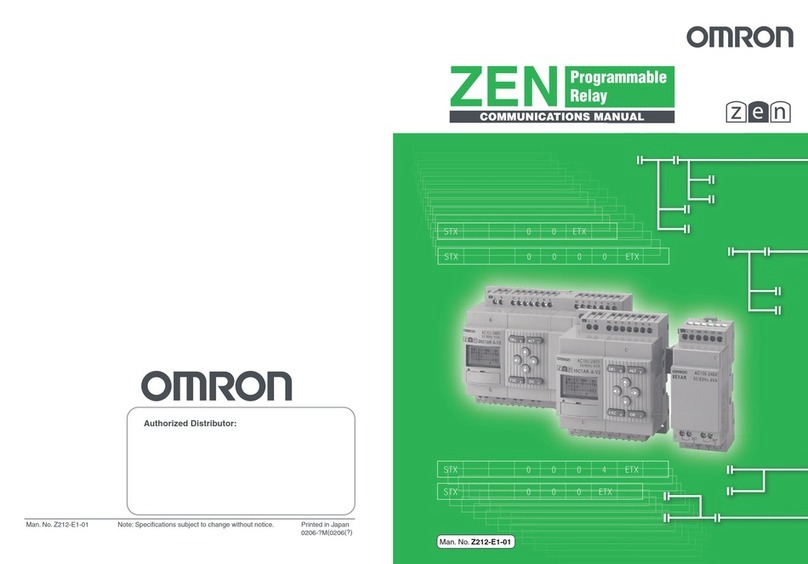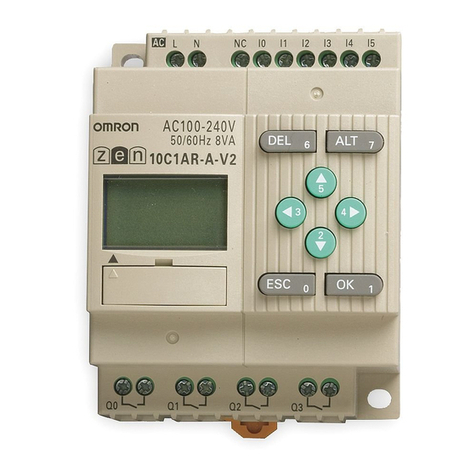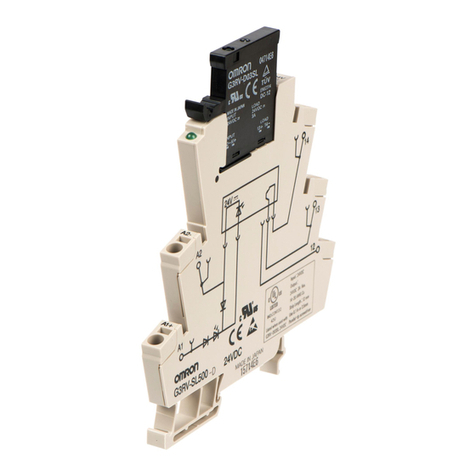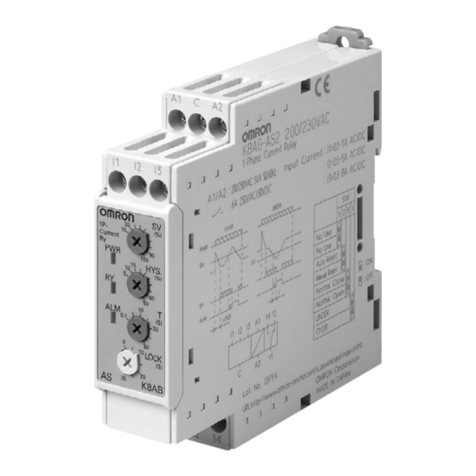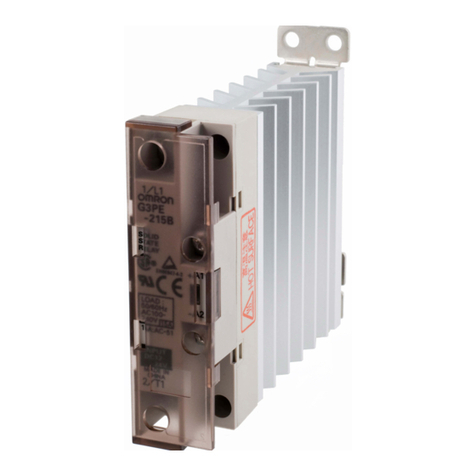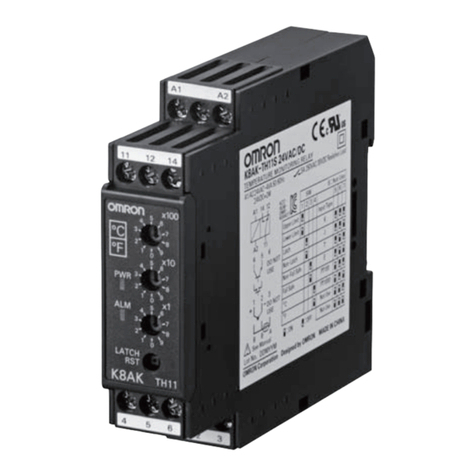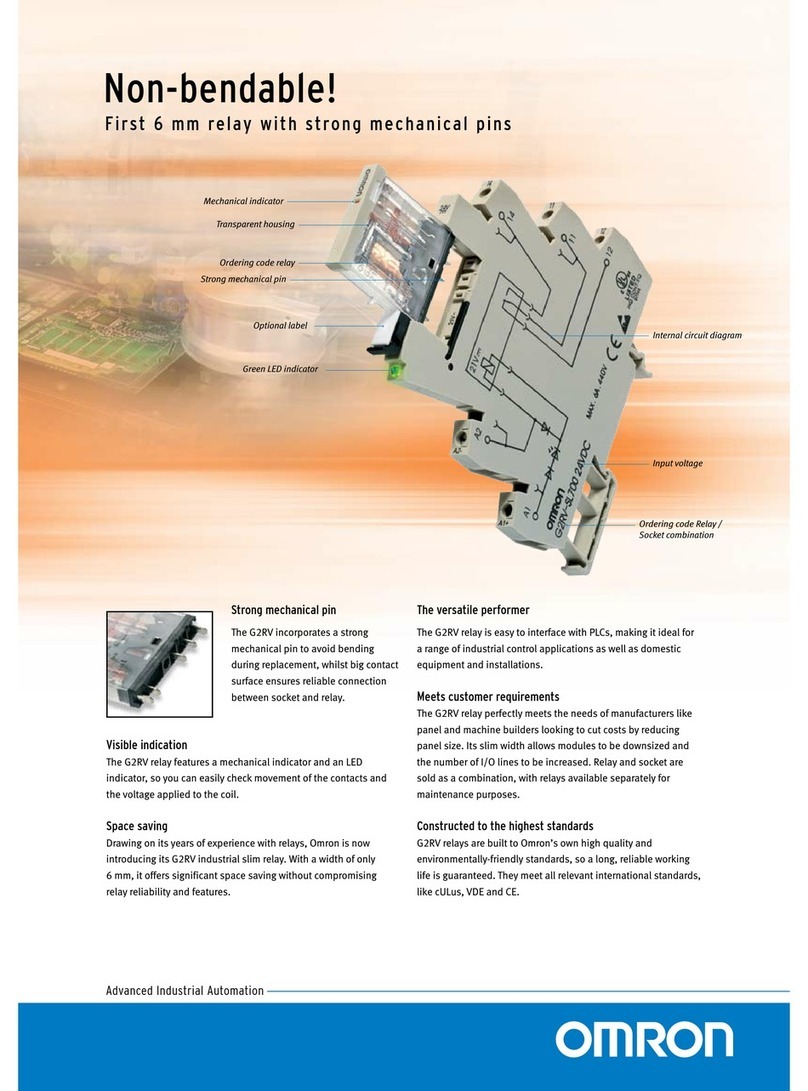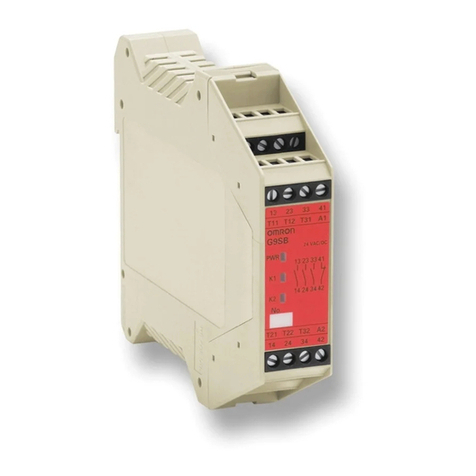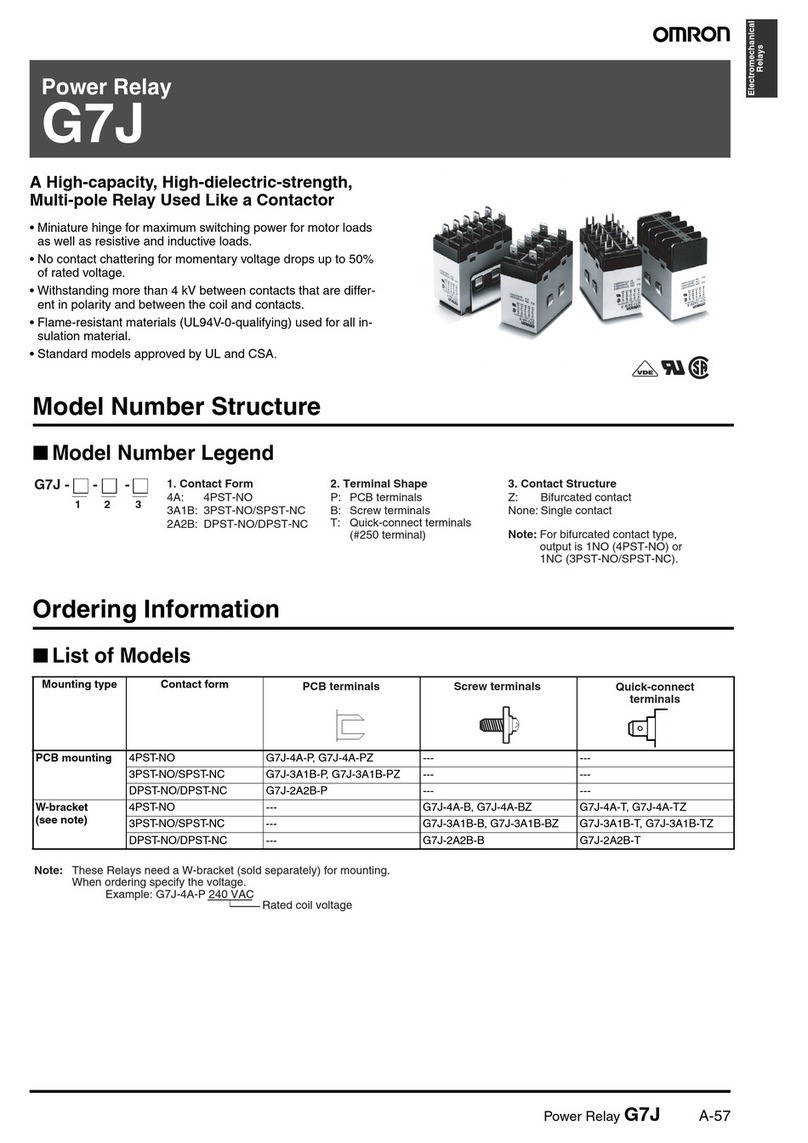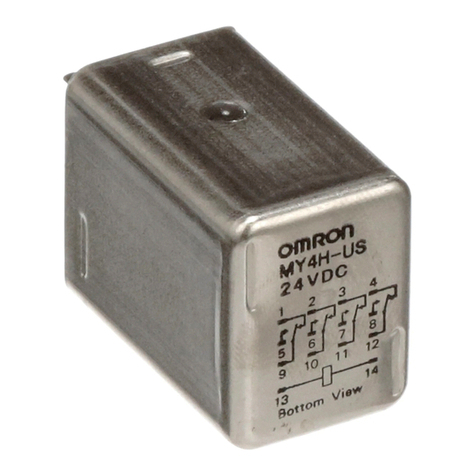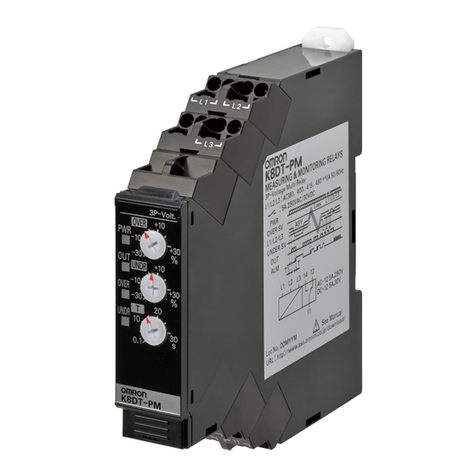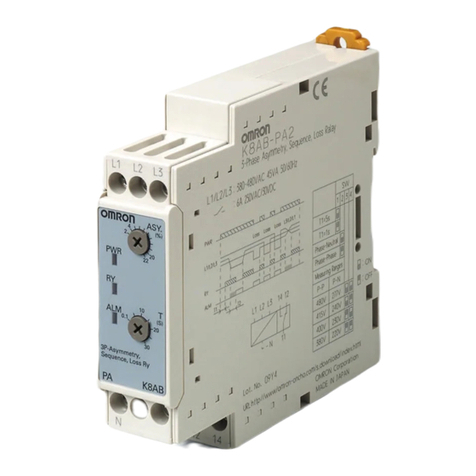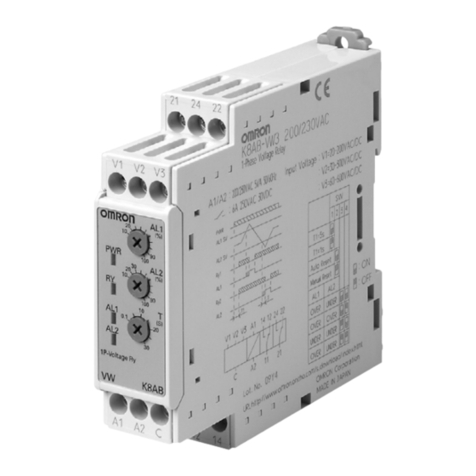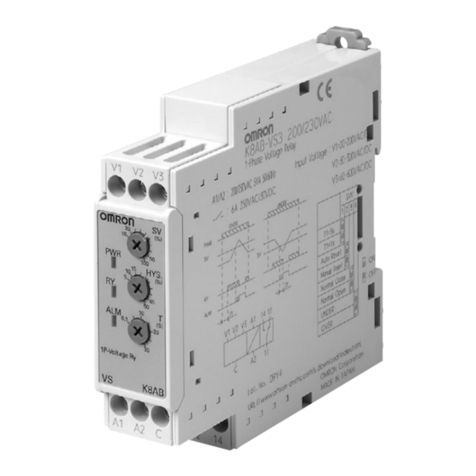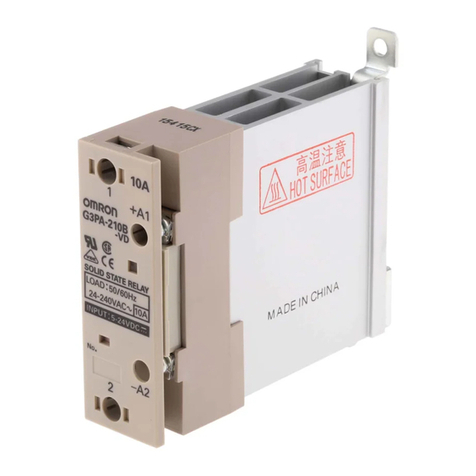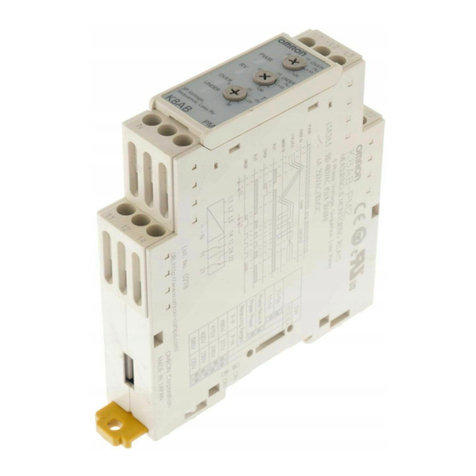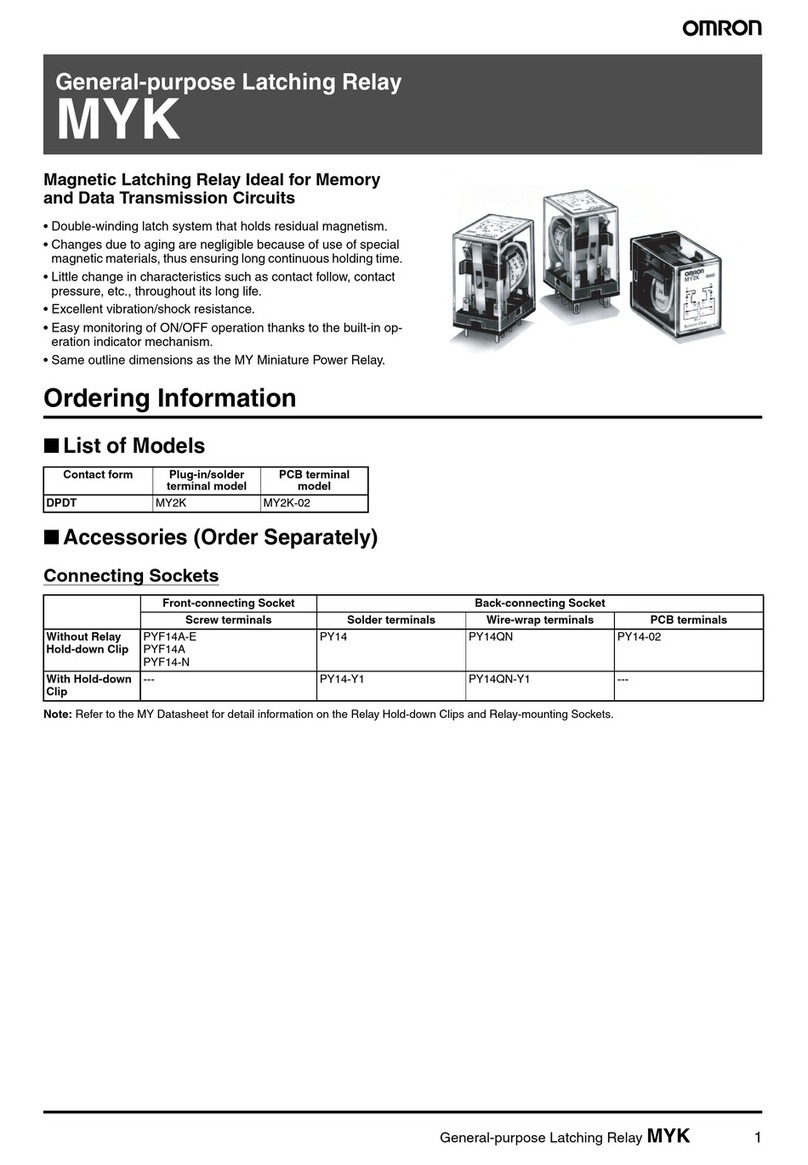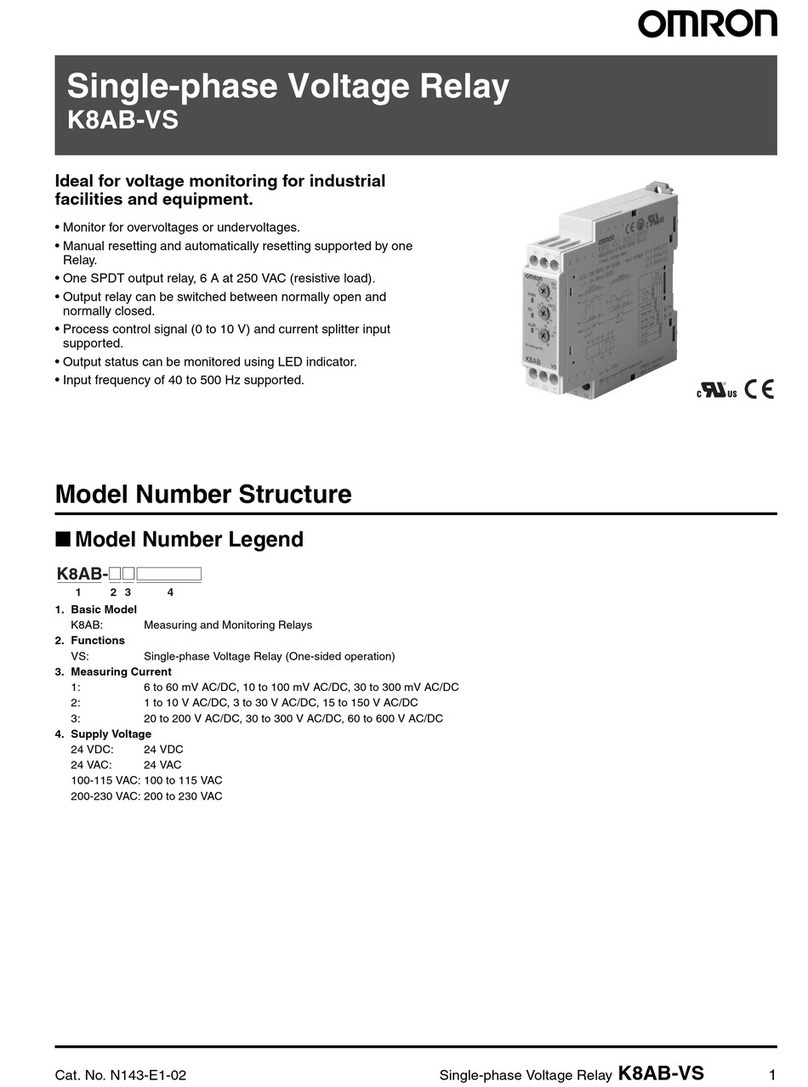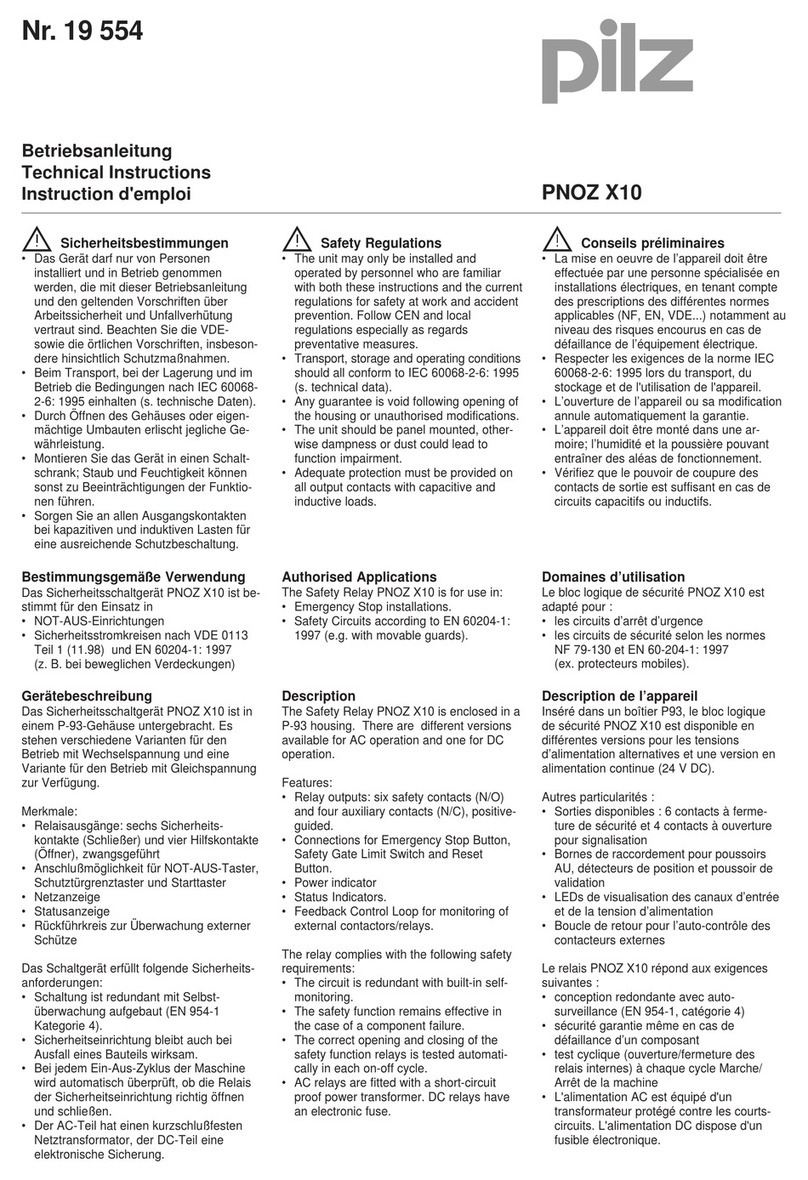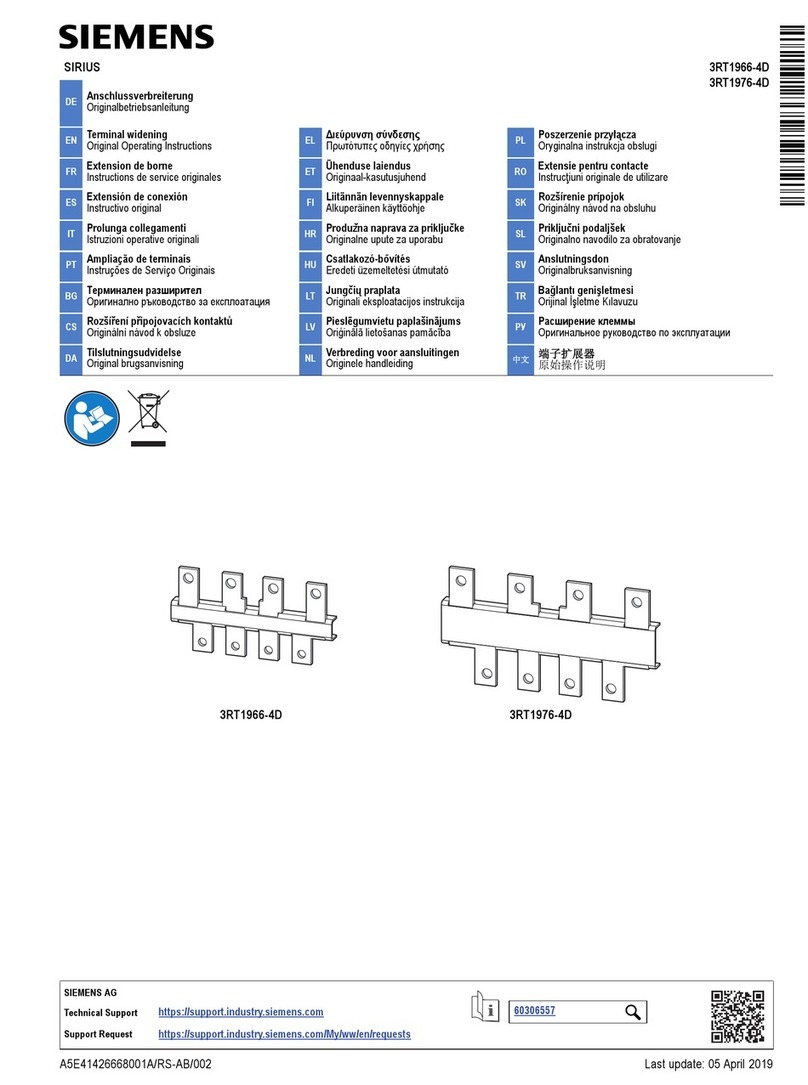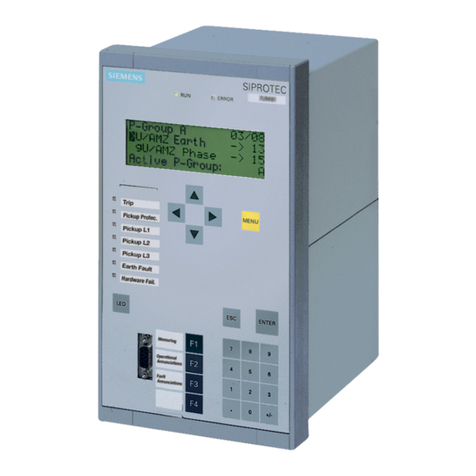G6D-F4B/G3DZ-F4B G6D-F4B/G3DZ-F4B
6
Precautions
Wiring
Be
sure to turn OFF the power when wiring the Unit and
do not touch
the
charged terminals of the Unit. Otherwise, an electric shock may
result.
Do not apply overvoltage to the input terminals. Otherwise, the Unit
may
malfunction or burn.
Relay Models
Do
not connect the Unit to loads exceeding the rated switching ca
-
pacity (switching voltage or current). Otherwise, faulty insulation,
contact
weld, or faulty contact of Relays, or damage to Relays may
result,
or the Relays may malfunction or burn.
The life of Relays varies with the switching condition. Test the
Relays under the actual operating conditions before using the
Relays
within the
permissible switching frequency
. The use of dete
-
riorated Relays may result in the faulty insulation of the Relays or
cause
the Relays to burn.
Do
not use the Unit in locations with inflammable gas. Otherwise, a
fire or explosion due to the heat of the Relays or sparks from the
Relays
may result when they are switched.
SSR Output (Power MOS FET Relay Model)
Do
not connect the Unit
to loads consuming a total current exceed
-
ing the rated output current of the Unit. Otherwise, the output ele-
ment
of the Unit may be damaged and a short or open-circuit mal
-
function
may result.
If
the Unit is connected to a DC
inductive load, connect a diode to the
Unit to protect the Unit from counter-electromotive voltage, other-
wise
the counter-electromotive voltage may damage the output ele
-
ment
and a short or open-circuit malfunction may result.
Correct Use
Mounting
When
mounting two or more Units, reduce the current and ON duty
and
provide an appropriate
distance between the Units so that the
ambient
temperature will not exceed 55
°C.
Relay Replacement
Use the Relay Removal Tool provided with the Unit to dismount a
Relay.
Be
sure to turn OFF the power to the Unit before
replacing a Relay
.
When
mounting a Relay
, insert the Relay vertically so that the relay
terminals will come in contact with the socket contact pins properly
.
Do
not mount Relays that are dif
ferent to one another in voltage.
Wiring
Pay utmost attention not to make mistakes with the polarity of the
input
terminals.
Coil
V
oltage
Make
sure not to impose
voltage exceeding the permissible voltage
on
the coil continuously
.
Do not connect any inductive load in parallel to the coil input as
shown
in the following example or power supply with
a surge volt
-
age. Otherwise, the surge absorption diode will be damaged.
Do Not Use the Following Circuit
Inductive load G6D coil Coil surge
absorption
diode
Handling
Do
not drop, shock, or vibrate
the Unit excessively
. Otherwise, dam
-
age
to the Unit may result or the Unit may malfunction.
Make sure that all the Relays are properly mounted before use.
Screw Tightening Torque
Tighten
each terminal screw to a torque of 0.78 to 1.18N
S
m.
T
ighten each mounting screw to a torque of 0.59 to 0.98 N
S
m.
Installation Environment
Do
not install the Unit in the following locations. Otherwise, damage
to
the Unit may result or the Unit may malfunction.
Locations with direct sunlight.
Locations with an ambient temperature range not within –25°C to
55°C.
Locations with rapid temperature changes resulting in condensa-
tion or locations with relative humidity ranges not within 45% to
85%.
Locations
with corrosive or inflammable gas.
Locations with excessive dust, salinity
, or metal powder
.
Locations with vibration or shock af
fecting the Unit.
Locations with water
, oil, or chemical sprayed on the Unit.
Disassembly, Repair, and Modification
Do
not disassemble, repair
, or modify the Unit. Otherwise, an elec
-
tric
shock may result or the Unit may malfunction.
